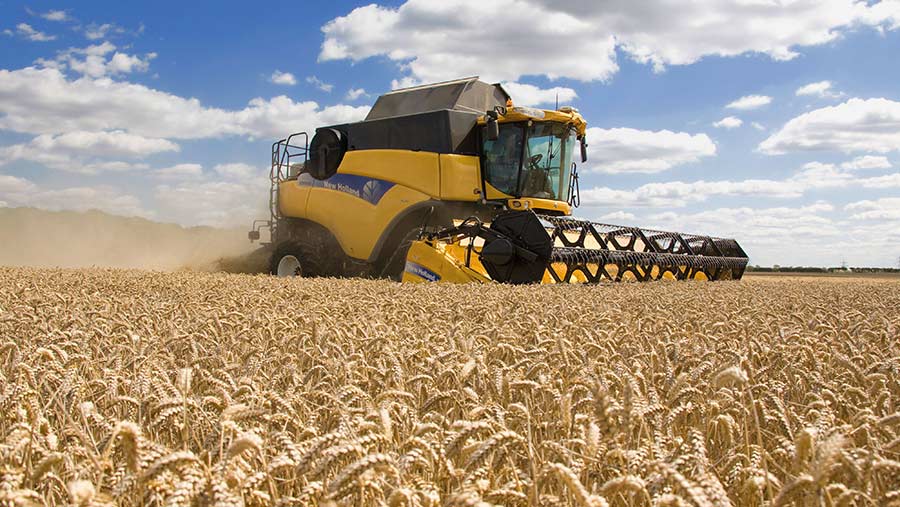What milling premium do growers need to cover extra N costs?
 © Tim Scrivener
© Tim Scrivener Milling wheat growers will need a £30/t premium over feed wheat prices to make it worthwhile to put extra nitrogen on their crops.
This will give them a good chance of hitting the breadmaker’s need for 13% protein grain.
Ammonium nitrate prices are soaring due to high energy costs and the Ukraine-Russia conflict.
Many growers will, therefore, be wondering if it is worth adding extra expensive nitrogen at the flag-leaf stage to crops if milling premiums are under pressure.
Sarah Clarke, principal research scientist at crop consultant Adas, says an extra 40kg/ha of nitrogen could increase grain protein by 1%.
See also: How Bedfordshire grower aims to cut N use in milling wheat
That could be crucial in hitting the 13% target, so even at current prices, this is still worth doing.
“In most cases, it will still be economically justified to target milling quality, particularly if premiums are £30/t or more,” she says.
Milling premium
Dr Clarke is assuming a milling wheat yield 9t/ha. At that yield, Defra fertiliser guidance RB209 suggests a crop would require 200kg/ha of nitrogen.
Then adding 40kg/ha to achieve 13% protein is worth it only if the milling premium is more than £30/t.
The current milling premium has narrowed from just over £40/ha at the beginning of the month to about £30/t.
Ammonium nitrogen has soared in price over the past nine months and was last quoted at £950-£1,000/t, from less than £300/t in June 2021.
She looked at factors leading to higher grain protein, and says that high soil organic matter and high nitrogen, phosphate and potash levels lead to higher protein.
Higher yields and late sowings tend to dilute overall protein levels.
“Results show protein is associated with optimised soils, including organic matter, and also early sown crops with appropriate nitrogen applied,” she says
Lack of Group 1s
With a lack of new Group 1 milling varieties coming onto the market, George Mason, senior executive at milling group Heygates, says his company has always supported the Group 2 milling variety Extase with its good baking qualities.
But he adds that it is a Group 2 milling variety because of its slight inconsistence.
His organisation, which buys about 650,000t of milling wheat annually, has contracted to buy Extase and also purchase it on the open market.
It will buy full-specification 13% Extase at a “slight discount” to Group 1 varieties, and buy down to a minimum of 11.5% protein.
Extase has gained popularity due to its high yield and good resistance to septoria. It is the number one winter wheat variety in the ground and is expected to be the leading variety next season.
The milling group also buys the German E, or elite, wheat variety Newton at a £15/t premium over Group 1 milling wheat, if growers can reach 14% protein.
Wheat use
British millers use just over 5m tonnes of wheat every year – with 80-85% being home-grown grain in recent years – out of the UK wheat harvest of 14m tonnes in 2021.
For feed wheat growers, Dr Clarke says that they could reduce nitrogen fertiliser levels by 50kg/ha without hitting yields dramatically, assuming an ammonium nitrogen price of £700/t and a feed wheat price of £200/t.
This nitrogen fertiliser reduction will lead to a fall in yields of 0.36t/ha, but that is offset by the saving in the expensive nitrogen.
Reducing the nitrogen rate by 50kg/ha results in a 1% reduction in grain protein, but this is not a great concern for feed wheat as buyers rarely buy on protein levels.
All the speakers were attending the AHDB Milling Wheat Conference held earlier this month.

